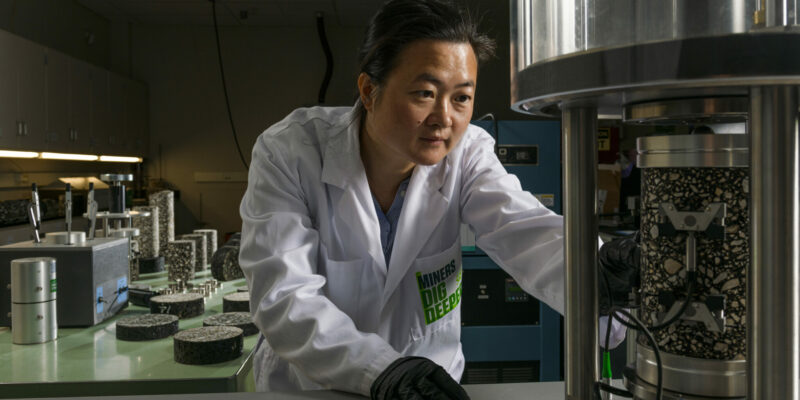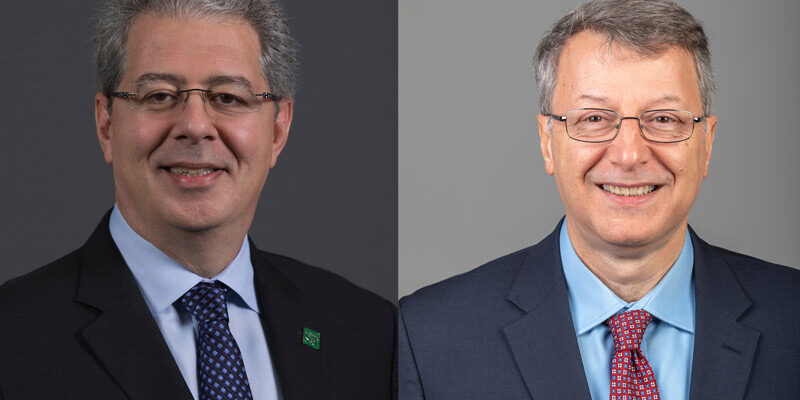Tag: research
S&T contributes to infrastructure durability and lifespan through national center
As America’s infrastructure ages and climate change takes a toll on highways, railroads and bridges, Missouri S&T is researching stronger, longer-lasting materials and innovative technologies as a member of the only national university transportation center focused on improving the durability and extending the lifespan of infrastructure.
Read More »S&T researchers use historical sea-level rise to estimate effects of ice-dam collapse
How widespread will the effects be as polar ice caps melt in a warming climate and release fresh water into our oceans? An international research group led by Missouri S&T researchers may have found some answers after investigating a lake on the Caribbean coast of Guatemala.
Read More »New roles announced for Costas Tsatsoulis, Kamal Khayat
Dr. Costas Tsatsoulis, vice chancellor of research and dean of graduate studies at Missouri S&T since September 2018, will become vice provost of graduate education at S&T effective Sept. 1. Dr. Kamal Khayat, the Vernon and Maralee Jones Professor of Civil Engineering at Missouri S&T, has been named interim vice chancellor of research, also effective […]
Read More »Missouri S&T researcher wins NSF CAREER Award for 2D metals research
As electronic devices get smaller and faster, computer chips must get thinner to save space and improve performance. Dr. Chenglin Wu, an assistant professor of structural engineering at Missouri S&T, has won a $500,000 CAREER Award from the National Science Foundation for his work in two-dimensional metals – metals that are three atoms thick – for use in computer chips, sensors and coatings.
Read More »Missouri S&T developing first user-friendly software platform to update dynamic networks
Researchers at Missouri S&T are developing a new approach for updating dynamic networks – like those used to track viruses, connect people on social media and coordinate transportation systems – that they say is the first scalable, expandable and user-friendly solution to analyze who is using the network, where they are, and what information and […]
Read More »S&T chemist works to recycle fossil fuel emissions
A researcher at Missouri University of Science and Technology is working to reduce greenhouse gases by designing a catalyst to convert the environmental pollutant carbon dioxide into new fuels and chemicals while using as few new resources as possible.
Read More »S&T announces Undergraduate Research Conference winners
Nineteen students in eight categories received recognition and cash awards as winners of the 16th annual Undergraduate Research Conference at Missouri S&T. The conference featured oral and poster exhibitions that represented work from students in nearly every major at Missouri S&T. First-place winners were awarded a cash prize of $500. Second- and third-place finishers received $250 and $100, respectively.
Read More »Missouri S&T researcher studying human-robot interaction wins NSF CAREER award
Research to understand how humans and robots communicate and interpret each other’s intentions has resulted in a Faculty Early Career Development (CAREER) award for Dr. Yun Seong Song, assistant professor of mechanical and aerospace engineering at Missouri S&T. The five-year, $538,876 award from the National Science Foundation (NSF) will support Song’s research to advance physical human-robot interaction.
Read More »Putting electric vehicle charging stations on the map
Electric vehicles (EVs) are a small but growing segment of the automobile market as consumers look for alternatives to fossil fuel use. But how can you charge an EV overnight if you don’t have a garage where you can plug it in? Researchers at Missouri S&T used machine learning to help Kansas City planners prepare to expand the availability of EV charging stations in neighborhoods where many apartment dwellers lack places to charge their cars.
Read More »New cellular treatment could cure chronic artery disease
A new, cellular-level approach to removing plaque build-up in the arteries could eventually lead to a cure for the chronic disease known as atherosclerosis, according to a researcher at Missouri S&T. The method uses nanoparticles that can be designed to deliver plaque-busting drugs to specific cells in arteries. The nanoparticles have an average diameter of 150 nanometers, about 1/500th the diameter of a human hair.
Read More »







